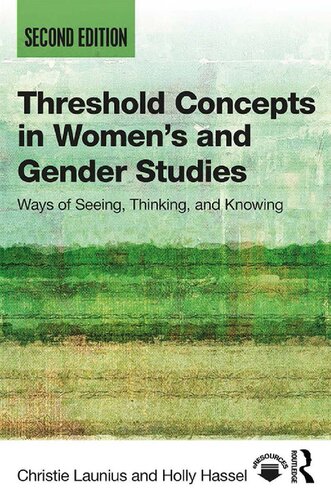

Most ebook files are in PDF format, so you can easily read them using various software such as Foxit Reader or directly on the Google Chrome browser.
Some ebook files are released by publishers in other formats such as .awz, .mobi, .epub, .fb2, etc. You may need to install specific software to read these formats on mobile/PC, such as Calibre.
Please read the tutorial at this link: https://ebookbell.com/faq
We offer FREE conversion to the popular formats you request; however, this may take some time. Therefore, right after payment, please email us, and we will try to provide the service as quickly as possible.
For some exceptional file formats or broken links (if any), please refrain from opening any disputes. Instead, email us first, and we will try to assist within a maximum of 6 hours.
EbookBell Team

4.1
80 reviewsThreshold Concepts in Women’s and Gender Studies: Ways of Seeing, Thinking, and Knowing is a textbook designed primarily for introduction to Women’s and Gender Studies courses with the intent of providing both skills- and concept-based foundation in the field. The text is driven by a single key question: "What are the ways of thinking, seeing, and knowing that characterize Women’s and Gender Studies and are valued by its practitioners?" Rather than taking a topical approach, Threshold Concepts develops the key concepts and ways of thinking that students need in order to develop a deep understanding and to approach material like feminist scholars do, across disciplines. This book illustrates four of the most critical concepts in Women’s and Gender Studies―the social construction of gender, privilege and oppression, intersectionality, and feminist praxis―and grounds these concepts in multiple illustrations.
The second edition includes a significant number of updates, revisions, and expansions: the case studies in all five chapters have been revised and expanded, as have the end of chapter elements, statistics have been updated, and numerous references to significant news stories and cultural developments of the past three years have been added. Finally, many more "callbacks" to previous chapters have been incorporated throughout the textbook in order to remind students to carry forward and build upon what they have learned about each threshold concept even as they move on to a new one.